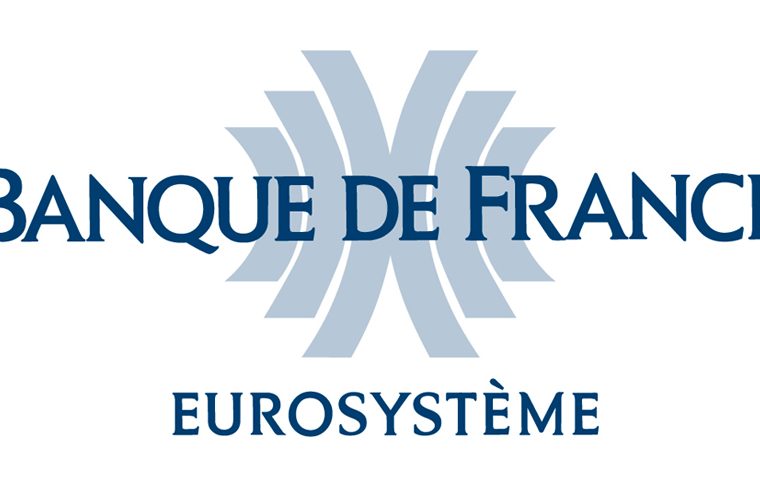Accompanying slides.
Ladies and gentlemen, I am very happy to introduce the 6th edition of the Rencontres du financement de l’économie. As a backdrop to your discussions, I would like to focus on the ongoing changes in the financing of the French and European economies and the related opportunities and risks, both from the point of view of a central bank, the Banque de France, and of a supervisor, the ACPR, which are responsible for ensuring the stability of our financial system and for contributing to a financing of economic growth that is resilient to shocks and sound. This concern for strong and effective financing of growth is highly topical for three reasons:
– the downside risks to the euro area’s outlook for expansion have increased in recent months,
– the digital revolution has started to spread widely across our economies, offering opportunities and gains but also raising threats for those who are unable to adjust,
– the predominance of bank lending, which accounts for 60% of corporate debt in France [Slide 1]. The remaining 40% stems from market financing, which is the exclusive preserve of large enterprises. This situation is not unique to France. It is quite widespread in Europe, in contrast with what prevails in the United States.
Already, several factors, such as the search for yield driven by a low interest rate environment, new regulatory constraints on the banking system, and digitalisation, are changing the way in which financing is designed, produced, distributed and managed. This transformation is leading to a more diversified financing structure for our economies. Is this diversification desirable? Is this diversification sufficient?
1. A desirable diversification of financing modes to spur growth and innovation, which must be further supported
My answer to the first question is yes because too strong a reliance on bank financing may constitute a source of vulnerability for business development in the event of a shock affecting the banking system. However, the relatively slow pace of development of this diversification shows that it is not so simple to achieve, and that it should be further encouraged.
A. In the short term, the efforts made to adapt the regulatory framework and standardise the alternative sources of financing to bank lending should be pursued.
In recent years, public authorities have made significant efforts to adapt the regulatory framework in order to support the development of alternative sources of financing to bank lending. These efforts must be pursued and matched by those of private players to standardise the market.
Thus, since 2017, the European Union has established a set of new rules for the development of sound securitisation, i.e. that is simple, transparent and standardised, to free banks’ balance sheet and thus encourage the issuance of new loans, while offering bond market exposure to borrowers which generally do not have access to such markets, such as SMEs. The potential for development is significant: in the euro area, ABS and MBS issuance is three times lower today than before the 2008 crisis1.
Other actions concern investment vehicles that enable companies to benefit from resources stemming from investors willing to take greater risks. For example, Euro Private Placements (EuroPP), for which a charter was drawn up in 2015, are now complementary to USPPs in the United States and Schuldscheine in Germany. Amounts issued by French companies totalled EUR 2.28 billion in 20182, but have been declining since the peak of 2015 (EUR 4.3 billion) because they do not offer sufficiently attractive interest rates. It is therefore important that market professionals pursue their efforts to promote this type of investment and step up their actions to standardise the market.
Conversely, the growth of crowdfunding platforms, albeit modest, is rising in France, even if the economic model for these platforms has not yet reached its equilibrium, with EUR 402 million3 raised in 2018, up 20% on the previous year, and a growing number of funded projects. This development benefited from the regulatory framework for crowdfunding implemented in 2014 and updated in 2016. This French framework should be further relaxed with the PACTE Act. Eventually, a draft European regulation currently under discussion could partially replace the French framework with a harmonised European statute and thus promote the development of cross-border transactions.
As regards Initial Coin Offerings (ICO), which enable start-ups to raise crypto asset funds very rapidly, their flows in France are still small (EUR 71.7 million during the first three quarters of 2018, 0.5% of the world total) but are booming (4 times higher than in 2017)4. The legislative framework, in preparation, will provide valuable benchmarks for investors, and is likely to increase their confidence in the mechanisms associated with crypto assets and thus promote their development.
B. In the longer term, the objective should be to strengthen capital to finance innovation
In an economy close to the “technological frontier”, as is the case in France, the key to growth lies in business innovation, and therefore in equity financing in the long term: as innovation is more risky, financing it must yield greater rewards.
However, in France, household savings are only modestly invested in equity products, and this is reflected in corporate financing. [Slide 2] There is a significant contrast between the United States and France, where corporate equity accounts for 122% and 77% of GDP respectively. From this point of view, France is not different from the rest of the euro area with the exception of Germany (80%).
What are the solutions?
At the national level, the PACTE Act proposes certain advances in life insurance, which is by far French households’ leading form of financial savings (EUR 1,700 billion at end-2018), in particular to promote the Euro-Growth Fund by making it simpler and more understandable for savers and to increase insurers’ investment in innovation financing. The French authorities are also very careful that the current review of the Solvency II Directive is favourable to the long-term investment of insurers in equities.
At the European level [Slide 3], we need to build a real “Financing Union for Investment and Innovation” to better steer our resources – a savings surplus of EUR 345 billion in the euro area5 – towards equity and innovation. This Financing Union must bring together and amplify existing initiatives, the Capital Markets Union, the Banking Union and the Juncker Investment Plan.
I would now like to answer my second question: is the diversification of sources of financing sufficient? From my point of view, the answer is no because diversification carries risks that need to be well managed.
II. Diversifying sources of financing is a complex business whose success requires managing all the traditional and new risks faced by intermediaries
A. First, there are the risks linked to fast-growing private sector debt
Corporate debt in France is growing much faster than in the rest of Europe [Slide 4]. We are now significantly above the euro area average. This raises the question of the sustainability of this debt, and of the impact of an upward shock to interest rates or a downward shock to activity, especially in an increasingly uncertain macroeconomic context (trade tensions, Italian budget, Brexit, yellow vests).

Given the situation, it was essential to avoid an infinite debt spiral. In December 2017, the Haut Conseil de Stabilité Financière, under the chairmanship of Minister Bruno Le Maire, thus decided to lower to 5% of their equity the ceiling of the main banks’ exposures to the most indebted large companies. It also decided to raise the countercyclical capital buffer of French banks, by 0.25% in June 2018 and again by 0.25% in March 2020. This countercyclical buffer, expressed as a percentage of core equity and applied to French exposures, aims at enabling banks to build up a capital reserve to maintain their supply of credit in the event of a turnaround in the financial cycle, the buffer then being immediately released.
However, these binding instruments apply only to banks, while non-bank intermediation is playing an increasing role in financing the economy. According to the ECB, the loans and deposits of investment funds have risen threefold since 2011. Macroprudential policy thus needs to be adjusted to better take account of this new dimension. The HCSF is firmly committed to this goal. Its powers enable it to intervene outside the banking sector and it has started designing stress tests that cover all sectors.
B. At the same time, a number of new, more structural risks are also emerging, brought about by digitalisation and global warming
Digitisation first gives a systemic dimension to cyber risk. The expansion of digital practices contributes to the propagation of cyber risk and amplifies it, through the interconnections between financial institutions, but also between them and their service providers. The fact that some of these providers are Fintechs and Bigtechs, which are unregulated and not easily substitutable, is an additional vulnerability factor.
To cope with these risks, we must resist the temptation to set up a bunker-style security system, which is a dead end, but rather imagine a system which combines openness and innovation. This is why we, at the Banque de France and the ACPR, are working with the other supervisors of the Eurosystem to ensure that the entities we supervise take cyber risk into account and to set up a broad programme for protecting the infrastructures that we operate. Cyber security is one of the key priorities of the French Presidency of the G7 in 2019. The Banque de France also contributes to the work conducted in this wider framework by coordinating the preparation and implementation of a cyber resilience test for the global financial sector.
As regards the risks associated with climate change, they can no longer be ignored. Physical risks – which correspond to the rise in the frequency and severity of extreme weather phenomena – are obviously the most visible and immediate for the financial sector. Transition risks – which stem from the adjustment to a low-carbon economy – are longer term and therefore less visible. To better assess these risks, we need to both measure exposures and perform forward-looking stress tests.
We also need to develop the considerable opportunities associated with the financing of the transition to a low-carbon economy [Slide 5] – this involves finding close to USD 90 trillion by 2030 – while preventing the risk of greenwashing. A major work programme for the Central Banks and Supervisors Network for Greening the Financial System (NGFS), which was launched by the Banque de France in December 2017 and now counts close to 40 members and entities about to join.
Conclusion
To conclude and summarise my speech, the diversification of sources of financing holds the promise of improving the financial system’s ability to support innovation and sustainable economic growth, as long as this diversification is encouraged and its risks are well managed.
Given this promise, the slow pace of change, the modest progress towards a capital markets union, the complexity of the challenges of digitalisation and green finance should encourage us to continue to act with determination, patience and perseverance. On the way, we can seek support and comfort in this quote by the former President of the Czech Republic, Vaclav Havel: “Hope is not the conviction that something will turn out well, but the certainty that something makes sense, regardless of how it turns out”.
Thank you for your attention.












